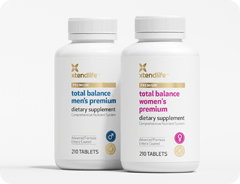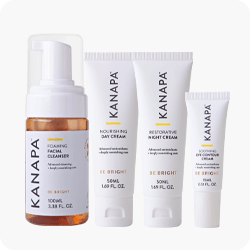Look beyond the macros!
What do you do when you pick up a protein bar in the supermarket? If you’re anything like most people, you probably just look at how many grams of protein it contains. While this is important, you need to keep reading... carefully!
It’s really important to read the nutritional information and the full ingredients list. Take note of which ingredients are listed first, because these are the ones that make up most of the bar… so if sugar is listed first, put that protein bar back! You should be looking for bars that list protein as the first ingredient.[1]
It’s also worthwhile scanning to see which ingredients in the bar are natural (If any). Look for real ingredients like peanut butter, oats, and eggs. If you don’t recognise any of the ingredients (or they all sound like they belong in the lab), look for another brand. You don’t need those chemicals in your life.
Look at the protein content – and the source
To promote recovery and support muscle repair, you need protein bars containing no less than 10g of protein.[2] Many common brands contain around 20g, which is ideal. Protein should be one of the first things listed on the ingredients list.
As well as how much protein you’re getting, it’s also important to take note of the type of protein in the bar. Whey isolate, casein, pea, and egg protein are all high-quality choices.
The one source of protein you should steer clear of is soy, particularly Soy Protein Isolate. Soy Protein Isolate is very highly processed and contains little nutritional value. It’s also a common allergen for many people and can cause digestive upset. And of course, there’s the issue of GMO (genetic modification). A very high percentage of the soy grown in the US is GMO,[3] and as food manufacturers are not required to identify it in labeling, there’s a good chance that protein bars will contain it.
Watch the sugar
Cookie dough… birthday cake…chocolate brownie… mars bar??! Browse the shelves of your local supermarket or health food store and you’ll find some pretty delicious-sounding protein bars. But can something that tastes like dessert really be a healthy snack?
We hate to say it, but if it sounds too good to be true, it probably is. Many commercial protein bars contain chocolate, sugar and glucose syrup – all foods we’d consider occasional treats, rather than healthy snacks. If the ingredients list reads like a chocolate bar, it’s probably best left on the shelf.
Other manufacturers go for the artificial sweetener option, but most of those aren’t much better. A common choice to sweeten protein bars is sucralose. Although it contains no calories, sucralose still spikes blood sugar and insulin levels the way that sugar does, leading to the same cycle of carbohydrate craving–blood sugar spiking–blood sugar falling – craving. Artificial sweeteners have also been linked to heart disease and diabetes[4] so they’re best avoided if possible.
Our advice? Bypass the protein bar and indulge in a real dessert every once in a while.
And sugar alcohols
No sugar on the ingredients list? Don’t be sure it’s healthy just yet! Many manufacturers replace sugar with sugar alcohols like xylitol, sorbitol, mannitol, and erythritol. While sugar alcohols have some benefits – they’re low in calories and don’t raise blood sugar levels the way that fructose and glucose do – they also come with a downside. Sugar alcohols are difficult for the body to digest, and some people can experience digestive discomfort after eating foods containing them, including constipation, diarrhea and bloating. [5] Proceed with caution.
Check out the calories
If you’re snacking on protein bars to help you lose or manage your weight, make sure you check out the number of calories on the back of the packet.
Despite their ‘diet food’ status, it’s not unusual for some protein bars to contain 350-400 calories or more – the same as what you’d get from a meal of steak and vegetables! If you snack regularly on that 400-calorie bar, you’ll probably find you gain rather than lose weight. For a satisfying snack, stick to bars containing 200 calories or less.
If you need a more substantial snack or meal, prepare one – ditch the protein bar and make a balanced meal. You’ll get far more nutrition – and you’ll be far more satisfied.
The final story
Protein bars are a convenient way to refuel after the gym, but they’re not all created equal – so make sure you read those labels carefully!
References:
[1] Presto, G. Good Protein Bars Decoded: 5 signs a protein Bar is worth eating.November 20, 2017. https://www.bornfitness.com/good-protein-bars/
[2] Presto, G. Good Protein Bars Decoded: 5 signs a protein Bar is worth eating.November 20, 2017. https://www.bornfitness.com/good-protein-bars/
[3] 5 Worst Protein Bar Ingredients. http://www.fitstep.com/2/2-how-to-build-muscle/muscle-building-supplements/5-worst-protein-bar-ingredients.htm
[4] 10 Gross Ingredients Lurking in Your Protein Bars. https://www.prevention.com/food/bad-energy-bar-ingredients
[5] Steelsmith, L. 6 Protein Bar Ingredients to Avoid. https://www.vitacost.com/blog/cooking-recipe/food-and-drink/6-ingredients-to-avoid-in-protein-bars.html
[6] Emilie Eats. Chocolate Covered Chickpea Protein Balls. https://www.emilieeats.com/chocolate-covered-chickpea-protein-balls/
[7] Peanut Butter Chickpea Energy Balls. https://pulses.org/nap/recipe/peanut-butter-chickpea-energy-balls/


 Supplements
Supplements Superfoods
Superfoods Bundles
Bundles









